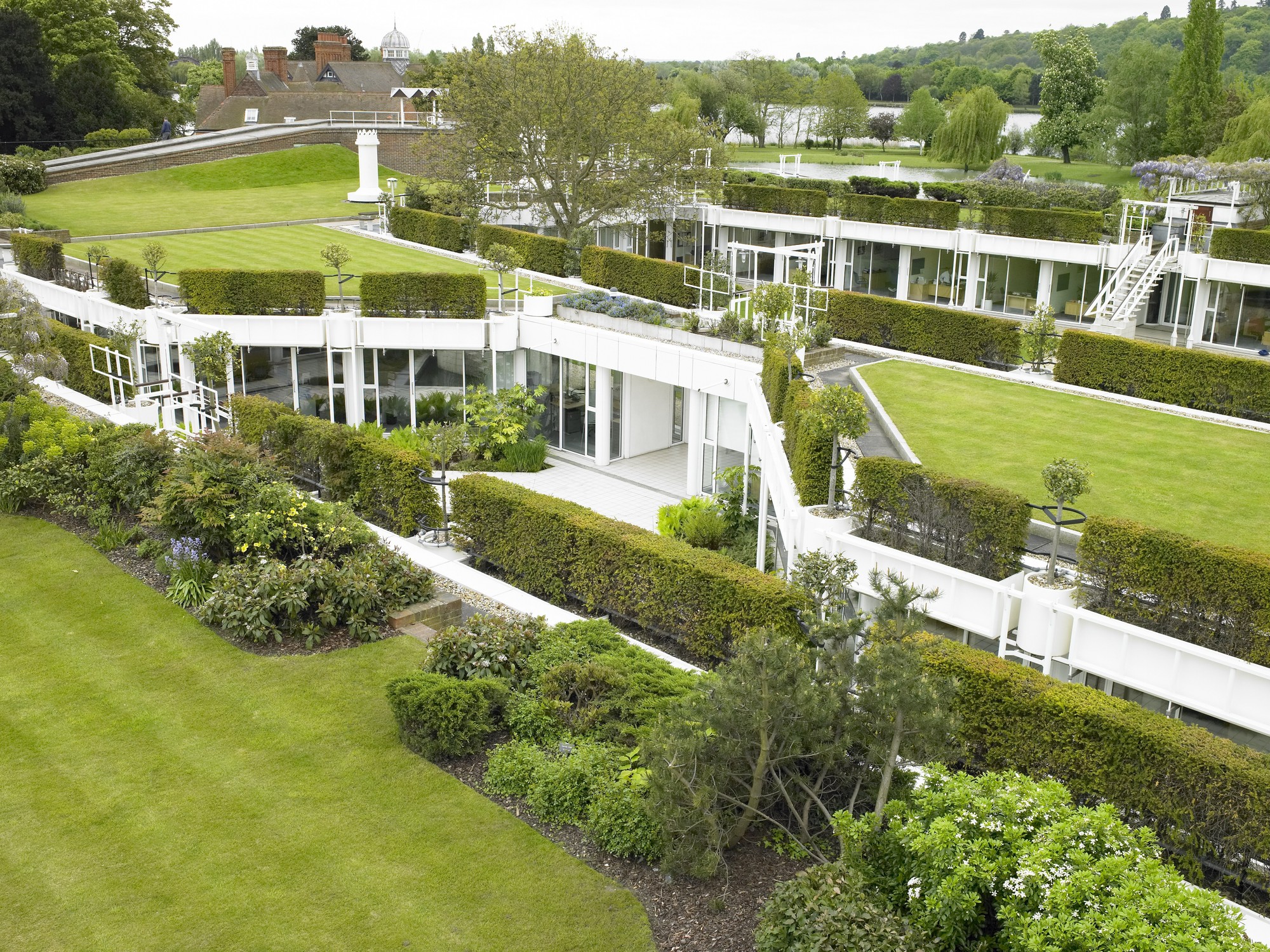
English Heritage has announced that the RMC headquarters building designed by Edward Cullinan Architects in 1990 has been listed at grade II*, preventing a plan to demolish the building and replace it with a terraced housing scheme. The listing comes after a campaign to protect the building which was orchestrated by Cullinan Studio and the 20th Century Society, and supported by a a number of high profile architects including Nicholas Grimshaw, Richard Rogers, Peter Clegg (Feilden Clegg Bradley) and Sunand Prasad (Penoyre & Prasad).
Read more about the building and the listing decision after the break
The RMC Headquarters building, now known as Cemex House, is a single storey complex built in an area of London's green belt, which minimizes its impact with an extensive roof lawn. Being environmentally conscious, the client requested a building which could be cooled without the use of air conditioning, inspiring Edward Cullinan Architects to design a building that regulated its temperature using the thermal mass of its landscaped roof.
The architects say that the building "was an early indictor of the future of low energy, ecological building design," a claim backed by Sunand Prasad who said "from an architectural point of view this building represents a new stream of thinking which we now take for granted."
Reacting to news of the listing, Cullinan said: "All of us are thrilled to hear that the value of our work on this unique building has been recognised and that this has led to its being listed for preservation."
English Heritage's Listing Statement in full:
"Cemex House in Thorpe, Surrey, has been listed at Grade II* by the Department for Culture, Media and Sport on the advice of English Heritage.
The building is a key work by Edward Cullinan, one of Britain’s most celebrated living architects, who has five listed buildings to his name including two at Grade II*. An inventive and sophisticated design which incorporates low-energy sustainable principles, Cemex House is an outstanding example of contextual planning on a green-belt site. It has influenced a number of late-twentieth century commercial offices and won several national design awards, including the RIBA National and South East Region Awards 1990 and the Financial Times Architecture at Work Award 1991.
The project is also exceptional for its continuous roof garden and the integration of the Grade II listed Eastley End House to create a seamless and site-specific design."

